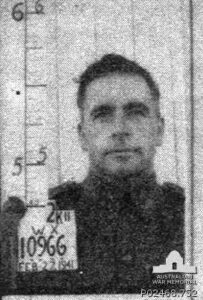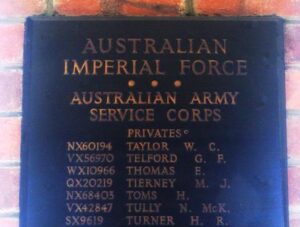Llanfair Clydogau is a small village situated about four miles north-east of Lampeter. The village Church, which is dedicated to Saint Mary, contains memorials to the villagers who fell during both World Wars. I presently have no photographs of these memorials, so the names below are taken from a monumental survey which was carried out by Dyfed History Society. These names come from two memorials inside the church, and also from details on gravestones in the churchyard.
The Great War, 1914-1918
David Davies, Private, 3603, Welsh Guards. David was born at Lampeter, and had enlisted into the Welsh Guards. The Welsh Guards had been formed after the Royal Warrant of 26 February 1915, and moved to France that year. David doesn’t look to have served overseas, but became ill and died at Lampeter on 11 February 1917. He was 24 years old, and is buried at Llanfair Clydogau (St. Mary) Churchyard. David does not seem to be commemorated locally.
David Lewis Davies, Private, 7612, King’s Shropshire Light Infantry. David was the son of Owen and Catherine Davies, of Bank Building, Llangybi. He had served with the King’s Shropshire Light Infantry prior to the war, and had returned to civilian life, remaining on the Army Reserve. At the outbreak of war David rejoined the colours, and landed in France on 10 February 1915, joining either the 1st or 2nd Battalion of the regiment. On 20 May 1915 the 5th Battalion, King’s Shropshire Light Infantry landed in France, attached to 42 Brigade, 14th (Light) Division, which moved to positions east of Ypres, around Hooge. The Division was to see its first action during the Action of Hooge, where the Division were the first to be attacked by the German use of flamethrowers. They then fought at the Second attack on Bellewaarde. In July 1916 they moved to the Somme, and fought at the Battle of Delville Wood. David was killed whilst fighting around Longueval on 29 August 1916. He is commemorated on the Thiepval Memorial, France.
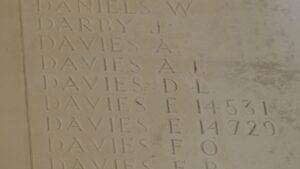
Thomas Watkin Davies, Private, 38164, Welsh Regiment. Thomas was the son of Mary Anne Davies, of Tynfron, Llanfair Clydogau. He enlisted at Aberystwyth into the 9th Battalion, Welsh Regiment, which was attached to 58 Brigade, 19th (Western) Division. The 9th Welsh moved to France on 18 July 1915, and moved with the Division to positions near Loos, where it took part in the opening attack of the Battle of Loos on 25 September 1915. Thomas was killed during the assault of the 9th Welsh near Givenchy on 25 September 1915. He was 20 years old, and is commemorated on the Loos Memorial, France.
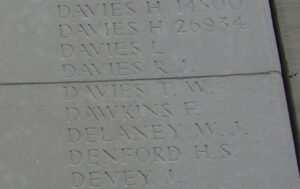
John Evans, Private, 53333, Cheshire Regiment. John was born on 4 March 1881, the son of David and Hannah Evans, of Tyngwndwr, Cellan. He resided at 30, Wood Street, Mardy prior to the war, where he worked as a mason, and married Annie Gertrude Hughes on 11 September 1913. John enlisted at Porth on 22 March 1915 into the 3rd Battalion, Welsh Regiment, and was placed on the army reserve, until being mobilised on 16 July 1917. John was then posted to France to join the 2nd Welsh on 30 March 1918, but was instead posted to the 11th Battalion, Cheshire Regiment, which was attached to 75 Brigade, 25th Division, and had been hit hard during the German offensive near St Quentin over the previous days. The battered division had moved north to Flanders on the night of 30 March, where they took up positions at Ploegsteert, where they received reinforcements, and rebuilt. However, on 9 April 1918 the Germans launched an offensive on the Lys, and the Division was caught up in the terrible fighting here. On 17 April 1918 John was reported as wounded and missing, during the terrible fighting in the Lys Valley. It wasn’t until 31 October 1918 that he was officially reported as being killed, probably after his grave had been found after the allies had launched their great offensive later in the year. John was 36 years old when he died, and is today buried in Lijssenthoek Military Cemetery, Belgium. John does not seem to be commemorated locally.
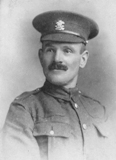
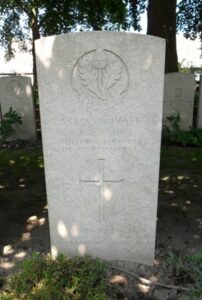
David Jones, Private, 10960, Royal Welsh Fusiliers. David was born at Llanfair Clydogau. He lived at Merthyr Tydfil prior to the war and enlisted into the 1st Battalion, Royal Welsh Fusiliers. The battalion was attached to 22 Brigade, 7th Division, and landed at Zeebrugge on 6 October 1914. The city was falling to the Germans, and the Division moved to Ypres, where it became the first British Division to hold the city. David was killed in action there during the First battle of Ypres, on 30 October 1914. He has no known grave, and is commemorated on the Ypres (Menin Gate) Memorial, Belgium. David does not appear to be commemorated locally.
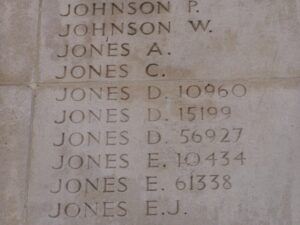
David Lloyd, Private, 54257, Welsh Regiment. David was the son of Moses and Ellen Lloyd, of Troedrhiwgoch, Llanfair Clydogau. He enlisted into the Welsh Regiment, and was posted to France, joining the 9th Battalion, Welsh Regiment, which was attached to 58 Brigade, 19th (Western) Division. The battalion moved to France on 18 July 1915, and moved with the division to positions near Loos, where it took part in the opening attack of the Battle of Loos on 25 September 1915. The following year the Division moved to the Somme, where it took part in the second wave of the attack on Ovillers-La Boiselle on 1 July, capturing the village at heavy cost. It then fought through the Somme Battles of Pozières and the Ancre in 1916. In 1917 the Division moved north to Ypres, taking part in the Battle of Messines. David was killed in action during the build up to the Battle of Messines, on 29 May 1917, aged 33. He is buried in Klein-Vierstraat British Cemetery, Belgium. David is commemorated at Capel Mair.
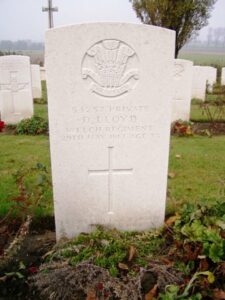
Evan David Williams, Private, 32892, Welsh Regiment. Evan was the son of Mr. and Mrs. Williams, of Greenfield Terrace, Lampeter. Evan had enlisted into the army, and was posted to the 13th Battalion, Welsh Regiment, which was known as the 2nd Rhondda Battalion, attached to 114 Brigade, 38th (Welsh) Division. On 2 December 1915 the battalion moved to France, and the entire Division moved to the Fleurbaix sector, where it was initiated into trench warfare. During June 1916 the Division marched south to the Somme, and on 7 July 1916 attacked Mametz Wood. The initial attack failed, and it was three days later, on 10 July, that a fresh attack was mounted. After two days of heavy hand to hand fighting within the wood, the Germans withdrew, and the battered Welshmen moved via Hebuterne to Boesinghe, on the Yser Canal, where it remained until launching its attack on Pilckem Ridge on 31 July 1917. The 15th Welsh remained in the line, and also took part in the Battle of Langemarck, before the entire Division was moved to positions near Armentieres over the winter. After the Germans launched their offensive on the Somme on 21 March 1918, the Division was moved back to the Somme, and took up positions north of Albert, around Aveluy Wood. On 21 August 1918 the Welshmen crossed the River Ancre, launching an attack on Thiepval and Pozieres Ridges. Within two days the ground had been captured, and the Division took part in the great offensive, helping to drive the Germans back towards the Hindenburg Line. Evan was gassed towards the end of his time at war, and was discharged from the army on 15 January 1919. He died as a result of his gas poisoning at Ynys Farm, Llanfair-Clydogau on 22 July 1919, aged 28, and is buried at Llanfair Clydogau (St. Mary) Churchyard.
World War Two, 1939-1945
Benjamin Lloyd-Jones, Sergeant, 625097, Royal Air Force. Benjamin was the son of Evan Lloyd Jones and Ellen Lloyd Jones, of Caelleinau, Cellan. He served with 220 Squadron, Royal Air Force, which was a Coastal Command Squadron, equipped with the Lockheed Hudson, it flew patrols from RAF Thornaby. On 5 August 1941, Benjamin was one of the crew aboard Hudson AM625, which left Wick to undertake a patrol. The aircraft failed to return. Benjamin was 22 years old, and is commemorated on the Runnymede Memorial, Surrey. His brother Evan died on active service on 20 April 1942.
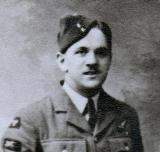
Evan Lloyd-Jones, Driver, 193705, Royal Army Service Corps. Evan was the son of Evan and Ellen Lloyd-Jones, of Caelleinau, Cellan. He was serving with the Royal Army Service Corps when he died on active service on 20 April 1942. Evan is buried in Llanfair Clydogau (St. Mary) Churchyard.
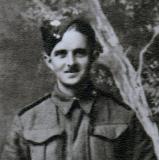
Evan Thomas, Private, WX10966, Australian Army Service Corps. Evan was the son of David and Elizabeth Margaret Thomas, of Llwyn, Llanfair. He had emigrated to Australia prior to the war, and lived with his wife, Kathleen Margaret Thomas, at Perth, Western Australia. Evan enlisted into the Australian Army Service Corps, and was posted to their 4th Reserve Motor Transport Company. Evan was posted to the Far East, and was taken prisoner by the Japanese in Malaya. He was interred at Changi Jail, Singapore, before embarking aboard the Hell Ship Ubi Maru, which arrived at Sandakan on 18 July 1942. Evan died at Sandakan on 21 March 1945, aged 38. His grave was lost, and he is commemorated on the Labuan Memorial, Malaysia.
